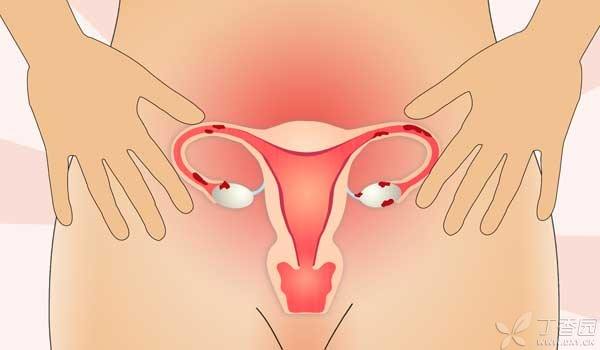
How many girls attribute their dysmenorrhea to a [cold uterus] caused by a [cold] and have to pour hot water or endure it desperately every month when they are miserable?
Here, we need to solemnly remind everyone that dysmenorrhea occurs again after menarche, especially if it is getting more and more painful, we must be careful [chocolate cyst]!
[Chocolate Cyst] has nothing to do with the chocolate we eat. Its scientific name is [endometriosis], just because the lesion looks like chocolate, and doctors like to name the lesion after what we eat, so it has a greedy common name.
[Chocolate Cyst] Is what’s Disease?
In short, the endometrium should have grown in the uterus, but it ran to other places for various reasons, the most common being the ovary.
The endometrium that grows in other places will also bleed along with the menstrual cycle, but the blood will not be discharged through channels, so a series of symptoms will occur: the blood will be continuously absorbed there, bleeding again, absorbed again… over time, a cyst will form. The color of this cyst is very similar to chocolate, so it is called [chocolate cyst].

[Chocolate Cyst] Some what symptoms?
1. Dysmenorrhea
Dysmenorrhea can occur before, during and after menstruation.
The most typical symptom is that there is no pain at ordinary times, and the pain is unbearable during menstruation. Even if analgesic is used, it may not be effective, or even the dosage is useless, but the pain stops after menstruation.
Pain is mainly caused by internal hemorrhage of cyst and stimulation of local tissue inflammatory reaction. What is more hateful is that endometriosis focus itself can lead to uterine muscle contracture and dysmenorrhea is bound to be more significant.
2. Abnormal menstruation
Just like our fingers are injured and bandaged, although the impact is not great, it will also affect the normal use of our hands.
Similarly, chocolate cyst grows on the ovary, which will also affect ovarian function and lead to abnormal secretion. The main manifestations are menorrhagia or cycle disorder, which will further affect ovulation function.
3. Infertility
[Chocolate Cyst] The main causes of infertility are:
- The ovulation function of the ovary is affected, and pregnancy becomes an uncertain matter. Bleeding will lead to inflammation around, and then the surrounding organs will adhere. Once the adhesion reaches the fallopian tube, the originally smooth and unobstructed tube will become crooked. The magpie bridge where the egg and sperm meet will be blocked, making it difficult to get pregnant.
4. Sexual pain
When endometriosis occurs, if the endometrium grows to the position near the vagina, such as the uterorectal fossa and the vaginal rectal septum, it can cause sexual intercourse pain, which is described as tenderness originating from the deep perianal part.
Because it stimulates the rectum, menstrual period will be characterized by increased defecation frequency and obvious pain.
5. Other
As endometriosis is likely to occur almost anywhere in the body, the symptoms will be varied and all-encompassing:
- Appearing on the lungs may cause periodic hemoptysis. Appears on the bladder, affecting urination or causing frequent urination, urination pain, etc. Appears on the incision of caesarean section, resulting in periodic pain of incision scars after operation, etc.

[Chocolate Cyst] How to Treat?
Drug therapy
According to the above logic, as long as you don’t menstruate, there will be no pain. Artificial false pregnancy and artificial false menopause can be realized through drug therapy to achieve the purpose of treatment.
Surgical treatment
The drug control is not good, the focus is large, there are obvious symptoms of compression and adhesion, the patient has fertility requirements, etc., and needs surgical treatment.
At present, laparoscopic surgery is mostly used. The specific scope of resection includes resection of focus, preservation of ovary and uterus, or resection of uterus or ovary together. These need to be selected according to the patient’s condition, age, and whether there are fertility requirements.
Due to the limitations of surgery and drugs, surgery combined with drug therapy can also be adopted, and ordinary patients can achieve better curative effects.
Therefore, if dysmenorrhea occurs again after menarche, and the pain is getting worse and worse, don’t just take pain-relieving tablets or lose your temper, remember to go to the hospital to check whether it is endometriosis.
Responsible Editor: Zhang Jingyuan
